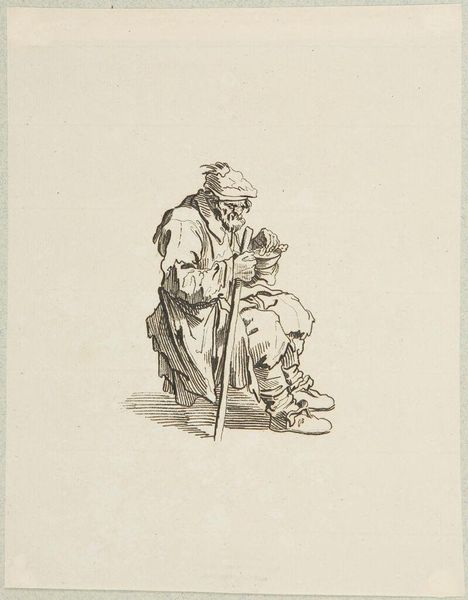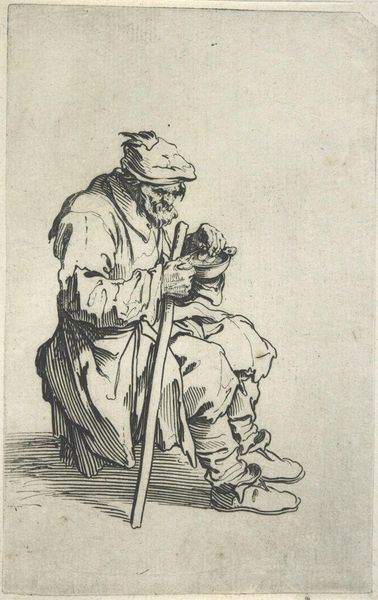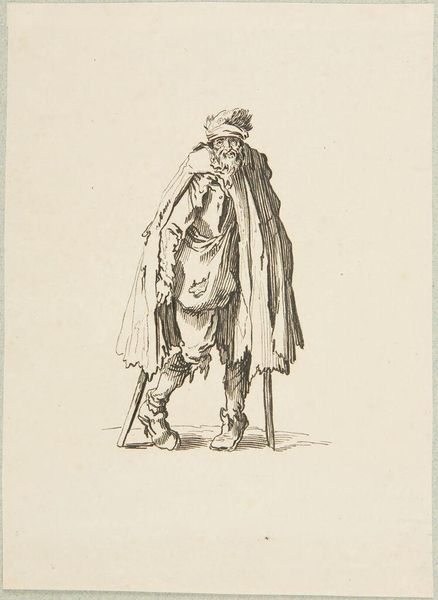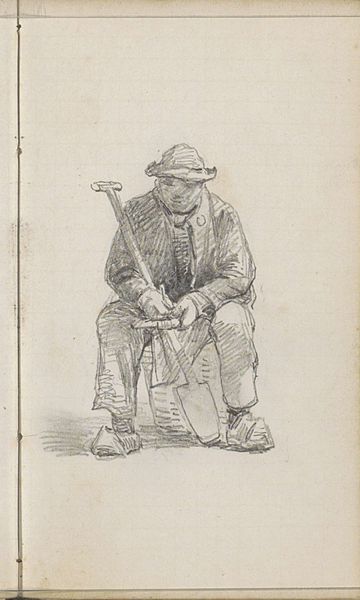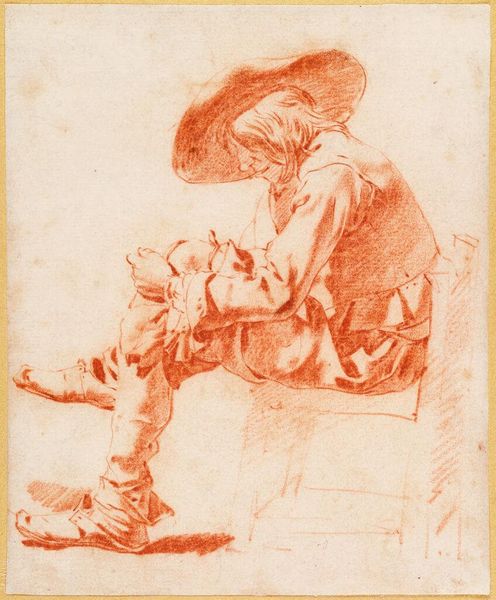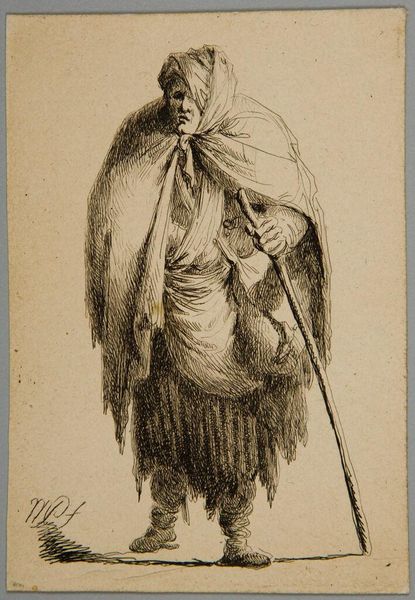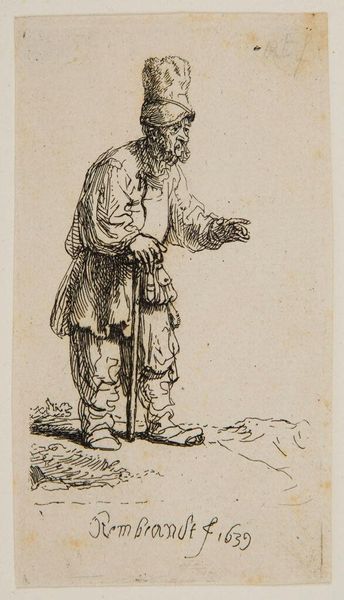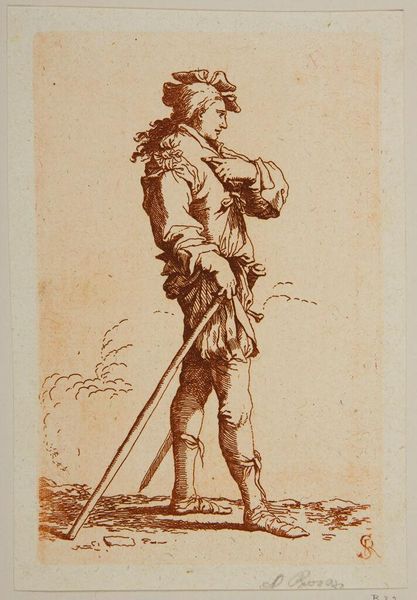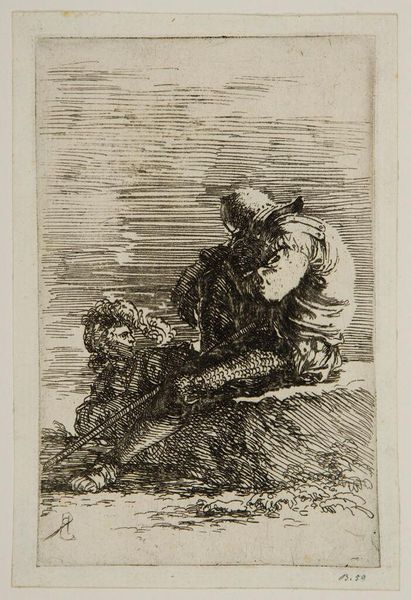
Dimensions: Plate: 13.7 Ã 9.3 cm (5 3/8 Ã 3 11/16 in.) Sheet: 16.1 Ã 11.2 cm (6 5/16 Ã 4 7/16 in.)
Copyright: CC0 1.0
Curator: The stark, almost brutal honesty in Jacques Callot's "Beggar Sitting and Eating" really strikes me. It’s a small print, just a few inches, but it feels monumental in its depiction of human struggle. Editor: Well, the figure certainly commands attention, doesn't he? Callot has rendered him with such detail, the lines etching out the weariness in his face, the patched clothing. One can almost feel the weight of his circumstances. How do such images reflect broader societal attitudes of the time? Curator: Callot was working in a time of immense social upheaval, particularly in Lorraine. Images like this became powerful, even political. The beggar figure, a near-constant presence, becomes a symbol of poverty, social injustice, and perhaps even a critique of the powers that be. The bowl he holds is not just for food; it's an emblem of dependency. The staff grounds him, but also constrains him. Editor: It’s interesting how a simple image can be a vessel for so many layers of meaning. Callot, through this work, offers a glimpse into a world we might otherwise overlook, challenging us to confront uncomfortable truths. Curator: Indeed. This image resonates through time, reminding us of the enduring presence of poverty and the necessity of empathy.
Comments
No comments
Be the first to comment and join the conversation on the ultimate creative platform.
